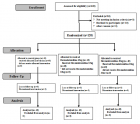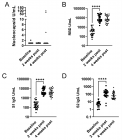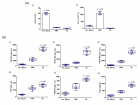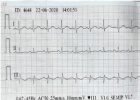Table of Contents
Determinants of Rural Women's Participation in Agricultural Cooperatives in Burundi: The Case of the TWITEZIMBERE and REKATUJANE Rice Cooperatives in the GIHANGA Commune
Published on: 13th February, 2024
This article shows the driving factors of rural women's participation in the TWITEZIMBERE and REKATUJANE rice cooperatives in the GIHANGA commune. These factors are related to the preservation of traditional culture in Burundi in general and in rural areas in particular, where women are in the majority. To achieve this, the research methodology used is both qualitative (individual interviews and documentary research) and quantitative (questionnaire administered to respondents). The results of this research show that traditional culture has forced rural women to stay at home to care for children and perform various household chores. This situation of isolation leads to a lack of information about the benefits of rice-growing cooperatives and the value they can bring to their members. It is also observed that rural women lack the will to adopt the new rice farming practices in Cooperatives. This situation of lack of will to adopt new behavior has hindered the massive participation of rural women in rice cooperatives. Finally, the article emphasizes that the illiteracy of these rural women and the lack of external technical and financial support are considered other important factors that constituted the barriers to their massive participation in rice cooperatives. To deal with this series of problems, the researcher has discovered strategies that can encourage rural women to participate massively in rice cooperatives, in particular, to become members of rice cooperatives that help their members to make them known and receive external technical and financial support, for example, incentives from the government. For this, the Government must therefore help them by providing multifaceted support including local and foreign technical and financial partners. Similarly, cooperative leaders might seek out various donors for their agricultural cooperative associations.
Evaluation of Heavy Metals in Commercial Baby Foods
Published on: 21st February, 2024
Nutritious and safe foods are essential to meet normal physiological and metabolic functions. This study evaluated heavy metals in selected food products for newborns and toddlers. These substances may result in adverse health risks and young children are extremely vulnerable due to their immature immune systems and organs. Industrialization and technological advancement have contributed to an increase in heavy metals in the soil; therefore, entering the food system in potentially harmful amounts. Safe levels have been established by monitoring agencies to reduce the presence of heavy metals. Ten national brands of baby foods were analyzed for selected heavy metals. The main ingredients ranged from vegetables, fruits, dairy, poultry, meats, and grains. The products were analyzed in triplicates using QQQ-ICP-MS instrumentation to detect the presence of arsenic, cadmium, zinc, lead, nickel, aluminum, and chromium. Based on the Agency for Toxic Substances and Disease Registry [1] guidelines for safe quantities, aluminum (4.09 µg/g and 2.50 µg/g) and zinc (33.5 µg/g 69.5 µg/g, and 30.2 µg/g) exceeded the recommended levels of 1 µg/g/day and 2 - 3 µg/g /day respectively. Mixed model analysis found significant differences in metal concentrations (F6,24 = 2.75, p = 0.03) with an average metal concentration of 0.96 µg/g. However, no significant correlations were found between the packaging materials used and the observed metal concentrations in the food samples. The study concluded that the presence of heavy metals may be due to food type and the soil on which it is grown and not the packaging materials, establishing food system contamination by heavy metals.
Transition to Cellular Nutrition as a Solution to Reduce Threats to Environmental Stability
Published on: 4th July, 2024
Nutrition is the process of supplying the organism with substances that have certain useful characteristics for the organism. It is through the process of nutrition that the organism receives the necessary amount of energy required for normal life activity. The cell is a structural and functional unit of the human body, and it is from a set of similar formations that tissue, organ, and organ systems are formed. Consequently, each cell of the body must receive the necessary supply of nutrients in order to continue its normal functioning. Cellular nutrition is the ability of each cell of the human body to consume nutrient molecules in the amount they need. In this case, the object of the study is just that nutrition, which begins with the nourishment of an individual cell. This article presents the results obtained by analyzing the data regarding the process of making the cell's consumption of the right nutrients while taking into account how the transition to cellular nutrition affects the environment and its constituents.
Response of Chemical Fertilisation on Six-year-old Oil Palm Production in Shambillo-Padre Abad- Ucayali
Published on: 13th September, 2024
It was proposed to determine the response of chemical fertilization in the production of oil palm (Elaeis guineensis Jacq.) six years old in the area of Rio Negro Shambillo Padre Abad in order to have a sustainable and economic alternative of chemical fertilization in the field stage, which contributes to the survival of the palm and provides the necessary resistance against pests and diseases. A completely randomized block design (DBCA) was used with four repetitions and treatments, 96 plants / UE / treatment were used, the spacing was 9x9 in rows and plants. Results obtained indicate the treatments; T3 and T2 (16,54 – 15,48 kg / plant) obtained the highest averages by bunch weight, T1 and T3 (17,48 – 15,42 fruits / bunch) obtained the highest averages regarding number of fruit / bunch, T1 and T3 (13,93 – 11,59 to 45 cm ) obtained the highest averages for bunch length, T1 and T3 (7,33 – 5,52 cm) obtained the highest averages regarding fruit length, T1 and T3 (11.37 – 9.54 g) obtained the highest averages regarding fruit weight, T1 and T3 (10,46 – 10,37 kg) obtained the highest averages to yield per plant. The addition of chemical fertilizers or organic amendments increases the weight of the oil palm bunch, consequently the production in soils with medium, low fertility; chemical fertilization influences the number of clusters of oil palm produced on a given surface, any dose is used as an alternative to phosphorous fertilization in oil palm with a direct relationship between plant height and root length.
Survival of Free and Encapsulated Probiotics in Healthy Gummy Candy as a Carrier for Probiotic Capsules
Published on: 1st October, 2024
Probiotic gummy candy is an innovative food that can be used as a carrier to deliver probiotics. This study aimed to manufacture healthy gummy candy (HGC) as a carrier for probiotic capsules. The ingredients' effect on the viability of probiotic capsules and free cells was evaluated for 48 days under refrigerated conditions. Also, the textural properties, overall acceptability of products, and physicochemical properties were tested. The encapsulation probiotics in sodium alginate and chitosan provided a high efficiency of 88.16%. At the same time, the encapsulated cells-based HGC (HGC-C) had higher counts of probiotics than free cells-based HGC, and it remained above the 3 log CFU/g at the end of the 48-day storage period in HGC-C, while the free cells reached zero at 30 days. The HGC product showed a low hardness value and high antioxidant capacity as well as, and the colour coordinates for the product showed more yellow, with an intense red colour. Using mango pulp and probiotics in gummy candies is an innovative and viable alternative to the confectionery industry; therefore, combining fruits as a source of prebiotics and probiotic bacteria could be a promising formula for probiotics gummy supplement preparation.
Agriculture High-Quality Development and Nutrition
Published on: 24th October, 2024
Modern Agricultural production wants to efficiently produce plant products and benefits to meet people's needs. However, because of better plant species and varieties, overuse of fertilizer and overdose of pesticide alters the plant resources relationship, resulting in soil degradation, vegetation decline, and crop failure or waste of resources, which influence the quality of fruit and benefit and are unfavorable for the sustainable utilization of nature resources and crops high-quality development. After a couple of years of study, the results showed that Agricultural development went into agricultural high-quality development in 2017, which is to use effective measures or methods to maximize yield and benefits and meet the need of people's need for better Agricultural produce and a better life. The theory foundation of the sustainable utilization of natural resources and Agriculture high-quality production is the resources use limit by plants, vegetation carrying capacity, and critical period of plant resources relationship regulation. The methods of Agriculture high-quality development are to select excellent plant species or varieties based on site conditions and market needs before planting crop young plants and sowing seeds, adopt appropriate initial planting density when planting crop young plants and sowing seeds, and regulate the relationship between plant growth and resources need in the process of crop production in a timely and appropriate amount, especially the chemical fertilizer and pesticide to obtain the maximum yield and benefits and realize the sustainable utilization of natural resources and achieve agricultural high-quality development.
Relationship between Fertility Diet Score Index Items and Ovulation in Women with Polycystic Ovary Syndrome: A Narrative Review
Published on: 18th December, 2024
Polycystic Ovary Syndrome (PCOS) is a common endocrine disorder affecting women of reproductive age, characterized by ovarian dysfunction and a leading cause of infertility due to ovulatory issues. Lifestyle interventions, including dietary modifications, exercise, and weight management, are considered first-line therapies for women with PCOS; however, the optimal treatment remains unidentified. The Fertility Diet (FD), introduced in 2007, represents a dietary approach that may positively impact fertility by emphasizing specific micronutrients, dietary composition modifications, weight management, and increased physical activity. This narrative review aims to evaluate how various components of the Fertility Diet influence ovulation and overall fertility, assessed through a fertility diet score. The findings of this study suggest that adherence to the Fertility Diet, particularly higher intake of the monounsaturated to trans-fat ratio, and increased vegetable protein intake, may positively influence fertility outcomes in individuals with PCOS. In contrast, high consumption of animal protein and high glycemic load food may have adverse effects. However, the current evidence remains insufficient for definitive conclusions, warranting further interventional studies to explore this relationship.

HSPI: We're glad you're here. Please click "create a new Query" if you are a new visitor to our website and need further information from us.
If you are already a member of our network and need to keep track of any developments regarding a question you have already submitted, click "take me to my Query."



















































































































































